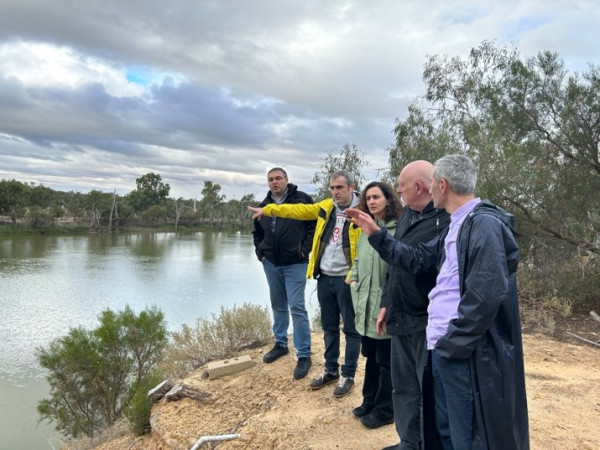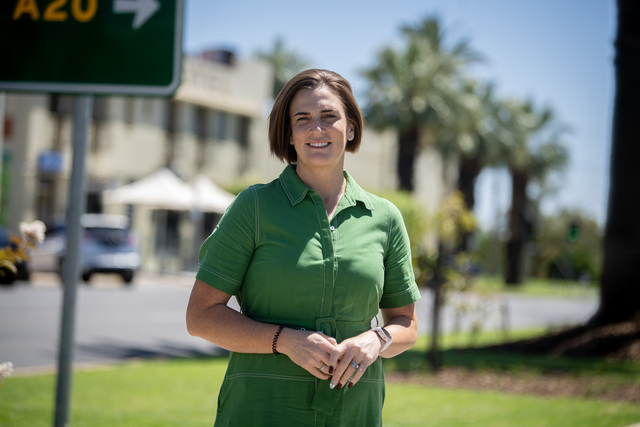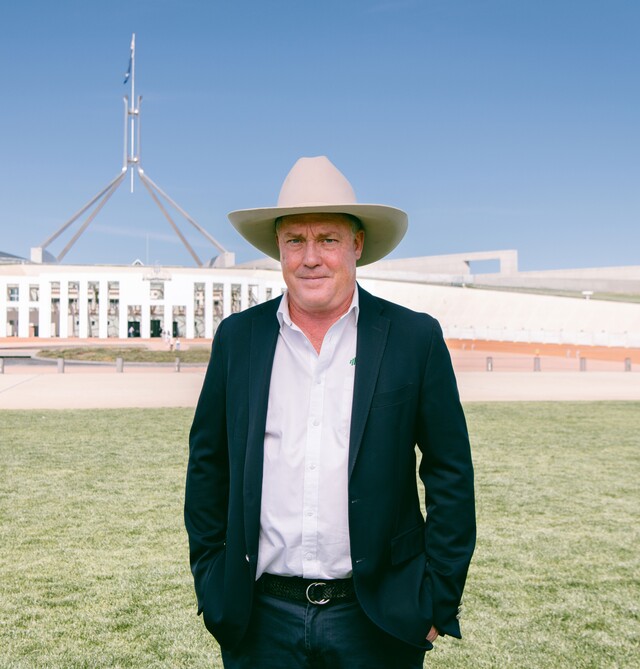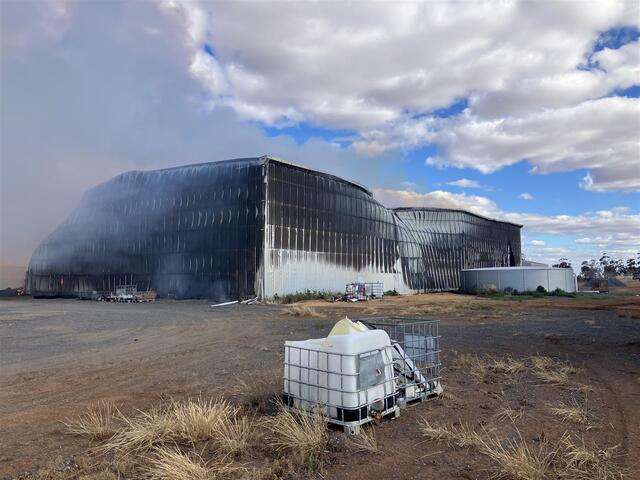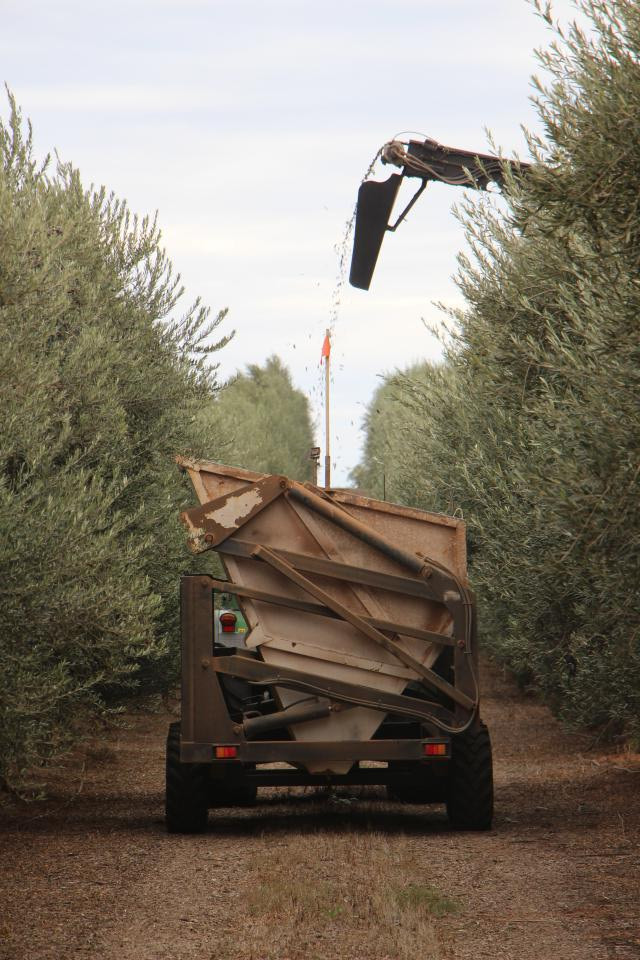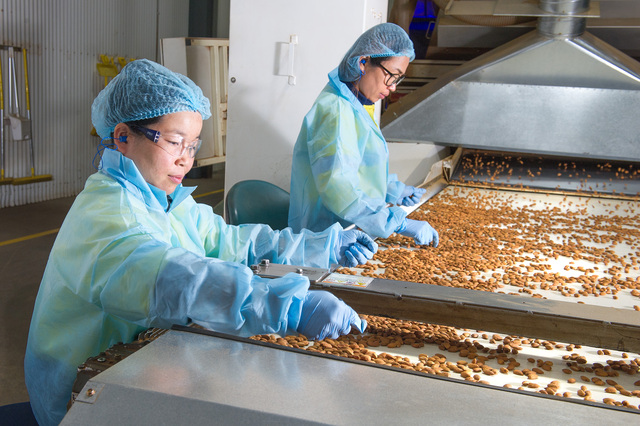A Georgian government fact-finding group has toured the Sunraysia and Swan Hill this week for guidance in returning the small eastern European country irrigated agriculture industry to its former glory.
In 1990, while still a satellite state of the USSR, Georgia had 500,000ha of cereals, grapes, vegetables, nuts and citrus under irrigation.
Barely two years later a combination of secession from Soviet Russia, a coup and a civil war, that figure had collapsed to 43,000ha.
As the nascent nation struggled to assert its independence and build an economy, it was quickly faced with the threat of food and water security.
Which meant urgently upgrading its dilapidated flood irrigation system to a modern pressurised drip feed system using industry best practice.
And Georgia’s head of the Hydro-melioration and Land Management Department, Gizo Chelidze, says that is what brought his group to Australia and northwest Victoria.
Mr Chelidze says Georgian officials, while agreeing to adopt the innovative system, wanted to see firsthand how a closed pipeline system operates, and to learn from the Australian experience before implementing it in his country.
He says the purpose of the trip is to visit modern, piped-irrigation schemes looking at the construction, operation, maintenance, technology, pipe fittings and different agricultural uses of the technology here.
“We have seen Australian irrigation applied to maize, grapes, fruit, almonds and pasture and we have been visiting different organisation structures and operation methods,” Mr Chelidze says.
“Where possible we have also visited smaller farms and gravity systems, which would compared well with Georgia,” he says.
“In summary, the innovative system we are looking to adopt is a gravity closed pipe network using HDPE welded pipes.
“This will deliver pressurised supply to hydrants serving 5ha with sufficient capacity to almost enable ‘water on demand’.
“That’s where farmers will directly connect to the hydrants, which will serve 5-10 farmers per hydrant, with flow sufficient for one to three farms to operate irrigation at the same time.”
At 69,700 square kilometres, Georgia is a small country, only about 1000 square kilometres bigger than Tasmania, with a population of 3.7 million (compared with Melbourne’s more than 5 million), but incredibly its climate and soil profiles between the west and east are like chalk and cheese.
The western half is plains set on the Black Sea and has a significant drainage problem before it can be successfully farmed. The east is hilly to mountainous, dry and, in winter, can sink to -17C in higher altitudes and reach 38C in summer.
The west is classified as a humid subtropical zone with annual rainfall anywhere between 1000–2500mm (but has been recorded above 4000mm), with most falling in autumn.
The climate varies significantly with elevation, and while much of the lowland west is relatively warm throughout the year, the foothills and mountainous areas (including both the Greater and Lesser Caucasus Mountains) experience cool, wet summers and snowy (up to 2m in depth) winters.
Georgia Amelioration Ltd head of international projects management office, Mikheil Margvelashvili, says Georgia’s traditional system of open channels and flood irrigation has to change because the country cannot even afford to lose water to evaporation, let alone deal with issues from inefficient water management to water theft (mostly through illegal pumping).
Mr Margvelashvili says that means replacing the open channels with pipes, introducing pressurised irrigation and demonstrating to Georgian farmers the savings in both cost and time.
He says this won’t happen overnight, but the government is taking it in manageable bites – a step at a time.
“The goal is to have irrigated farming back to 200,000ha by 2025 and the Australian technology and implementation we have seen is very encouraging,” Mr Margvelashvili says.
“But as well as our inherent problems, Georgia is also being confronted by climate change – in the past 10 years the nation’s reservoirs have no longer been filling.
“Also, much of our water is glacially fed, and our glaciers are no longer stable, they are melting and losing size, and that is very bad news for our country – whether this is cyclical or a permanent change, only time will tell.
“Hydro electricity supplies much of our power, and in winter, when it is really needed for heating, many of the rivers are frozen and so we are power deficient and have to import energy – and that’s a real cost.”
All the delegation members were amazed by sights around Mildura, such as citrus and grapes growing alongside each other – in Georgia they have to be grown at opposite ends of the country because of weather.
There was also strong interest in the wine grapes – Georgia is widely regarded as the ‘cradle of wine’, with archaeologists having traced the world’s first known wine creation back to the people of the South Caucasus in 6000BC.
Mr Margvelashvili says the masterplan is to develop Georgian irrigated food from almost total domestic consumption to surplus production and the opportunity to export – where he says the money is to be made.
He says after the loss of the Russian market for most of the nation’s wine production, Georgian growers had to dramatically boost the quality of their end product to make it attractive as an export.
Today it is sold to all the countries around Georgia, from Russia to Turkey and to Europe and Asia.
Tour leader Rob Rendell, a founder of Bendigo-based environmental and agricultural consultancy RMCG, is working with the Georgians through the Australian Water Partnership, set up by the Department of Foreign Affairs and Trade, to better manage ‘small projects’.
Rob has been to Georgia consulting on this project three times in the past eight months and says the key here is Georgia is modernising, not rehabilitating, its irrigation networks.
He says the biggest step for the Georgian agriculture industry is changing the irrigation system which has sustained its production system for generations to something ‘new’.
“That is the essence of this visit, to see not only that pressurised irrigation works, but that it will work for them and they will be so amazed at how well it works, they will all wonder why they have waited so long to make the change,” Mr Rendell says.
“Working with the Georgians here, and in their country, has also been a learning experience for me and I have learnt a lot, so I am confident so will the people on this visit.”

